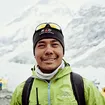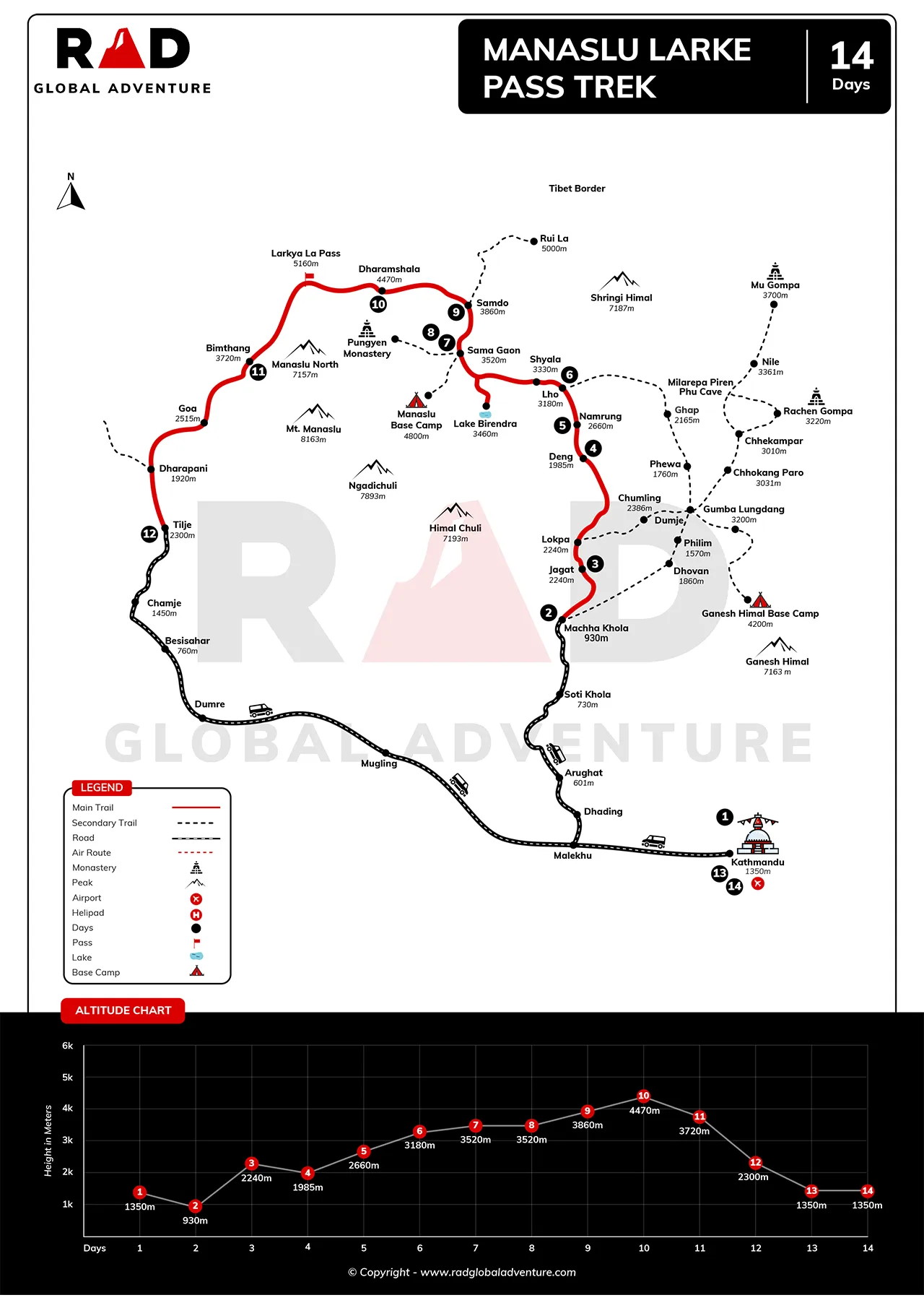Scenic Drive to Machha Khola
From Kathmandu, you will follow Prithvi Highway passing terraces of green hills and valleys, alongside rivers, and rural villages. As you approach Dhading Beshi, the roads narrow, crossing bridges, revealing the daily lives of people.
You pass the confluence of the Trishuli and Marsyangdi rivers, then move towards Arughat and Soti Khola. “Private” vehicles allow a few stops for photos, but the last trek to Machha Khola is rugged, remote, and beautiful, with Ganesh Himal peering there above the hills.
Explore Remote Villages of Jagat & Deng
The Jagat-Deng portion introduces you to Gurung and Tibetan culture. Jagat has stone alleys and mani walls, and it also has traditional stone and timber houses.
The Philim to Deng portion passes over the gorge terraced fields, through dense pine and bamboo forests, and into Deng, where people farm barley, buckwheat, and potatoes. Old folks talk about their harvests, and the neighboring yak herders—all that is the challenge and joy of remote Himalayan life.
Namrung & Lho – Villages with Himalayan Vistas
Namrung (≈ 2,630 m) has carved wooden windows, carved wooden chortens, monasteries, and views in all directions of Siringi and Ganesh Himal. Lho is on a ridge at a higher elevation and has Ribung Monastery with many young monks.
Also, a few viewpoints in Lho give momentous sunrise views of Manaslu’s summit. Villagers do welcome you with “Tashi Delek” and then offer to taste their local food of tsampa. In Lho, you can find stars in the night sky, which is clear and bright without city light.
Acclimatization with Stunning Side Trips
An essential highlight of the Manaslu Larke Pass trek is the acclimatization day at Samagaon. Side trips to Birendra Lake or Manaslu Base Camp provide both altitude preparation and spectacular scenery. Birendra Lake’s turquoise waters mirror the jagged peaks and glaciers above.
The hike to Manaslu Base Camp climbs through moraine and offers close‑up views of towering seracs and avalanches rumbling in the distance. On the return, you may encounter yak caravans and monks collecting wood. These side trips provide a sense of proximity to the eighth‑highest mountain while ensuring you acclimatize safely.
Crossing the Mighty Larkya La Pass (5,106 m)
You leave Dharmasala early in starlight and climb around the frozen lakes and the moraine. Morning Prayer flags beautifully adorn the high saddle of Larkya La Pass (5,106‛) and overlook the entire range of Himlung, Cheo, Kang Guru, Annapurna II, and so forth. To Bhimtan, the descent by scree is steep. Passing the pass is both an exciting achievement, both physically and in the emotional sense.
Witness Towering Peaks at Close Range
During the trek, a variety of towering summits will captivate your eyes. From Manaslu (8,163 m), Himalchuli (7,893 m) to Ngadi Chuli, Ganesh Himal, and many others, mountains appear and reappear from varying angles, particularly near Lho, Shyala, and Samagaon.
Day passes are bursting with vistas, including the Annapurna range to the west. Experiencing these peaks of the Himalaya up close will create a unique mountain experience.
Blend of Trekking & Expedition Feel
Combining the comforts of a teahouse trek with an expedition‑style adventure, sleeping in family‑run lodges, through remote rugged terrain, crossing a high pass, and dealing with altitude makes this trekking experience satisfying.
Hiking in the Manaslu region is much quieter than the busier Everest and Annapurna trails & suitable for solitude seekers, in accordance with there being licensed guides and porters for safety. The daily walking may feel strenuous, but carrying only a daypack, you can fully immerse yourself in the walking festival, cultural experiences, and beautiful scenery.
Manaslu Base Camp Hike
From Samagaon, the hike to Manaslu Base Camp (~4,800 m) travels over rocky terrain and moraines. Entering the river source glacial area, enormous seracs and crevasses appear.
The mountains include Larkya, Naike, and Peak-29. Prayer flags tangle in the wind as climbers head for high climbs. Returning to Samagaon by the afternoon means you are now acclimatized and stimulated from the day’s experience.
Cultural Immersion with Gurung & Tibetan People
The trek is characterized by a rich cultural bias in terms of the low Gurung rural areas to the high politeness of the Nubri/Tibetan areas. The inhabitants of villages are yak breeders, wear traditional attire, and are Tibetan Buddhists.
You can visit local area where you may savor butter tea or millet beer. Daily mountain life is enhanced by festivals, mask dances, rituals, and beliefs.
Off‑the‑Beaten Himalayan Trail
This small-scale area has wilderness and solitude as opposed to Everest or Annapurna, which have higher populations. The trails meander through the untouched forests, secluded gorges, and mountain plateaus.
Infrastructure is simple but cozy; tea houses are simple.Independent trekking is not allowed, so all groups must have licensed guides and porters. Loneliness and uncivilized beauty make this hike look more like an expedition than a sightseeing path.
Transition of Landscapes
A drastic scenery change is evident during the Manaslu Larke Pass trek. It begins with a hike in moist sub-tropical forests. Above 3,500 m, you are in an alpine grassland or meadows with juniper shrubs. When near the pass, the landscape is barren with glacier moraines and frozen lakes.
After the pass, you again experience forests with rhododendron in bloom in the spring, and glorious autumn colors. The starkness of the Manaslu Larke Pass trek changes each day at altitudes from subtropical forest to barren glacier to lush alpine pasture. You will always be amazed by the height of the Nepalese hills.




